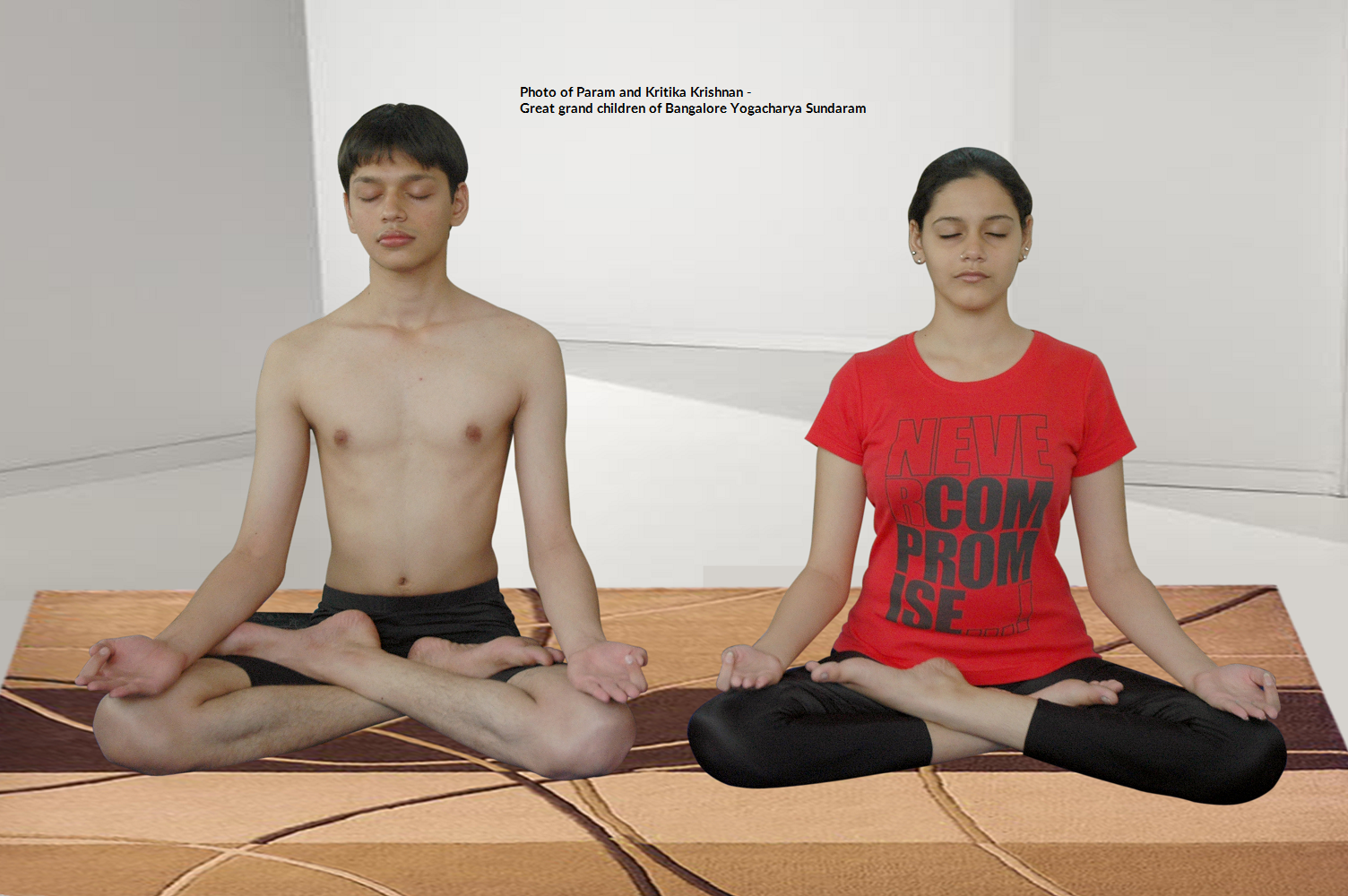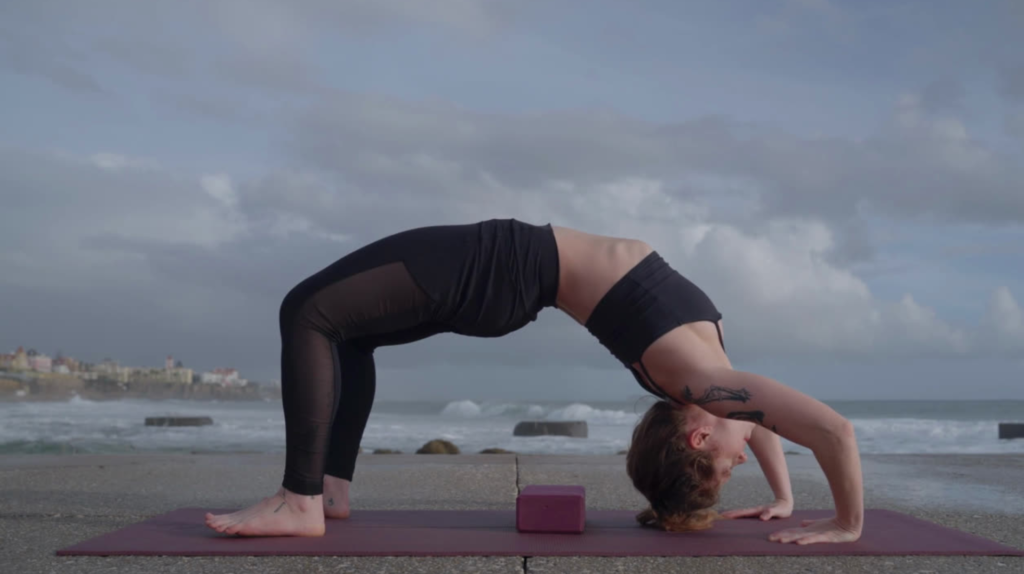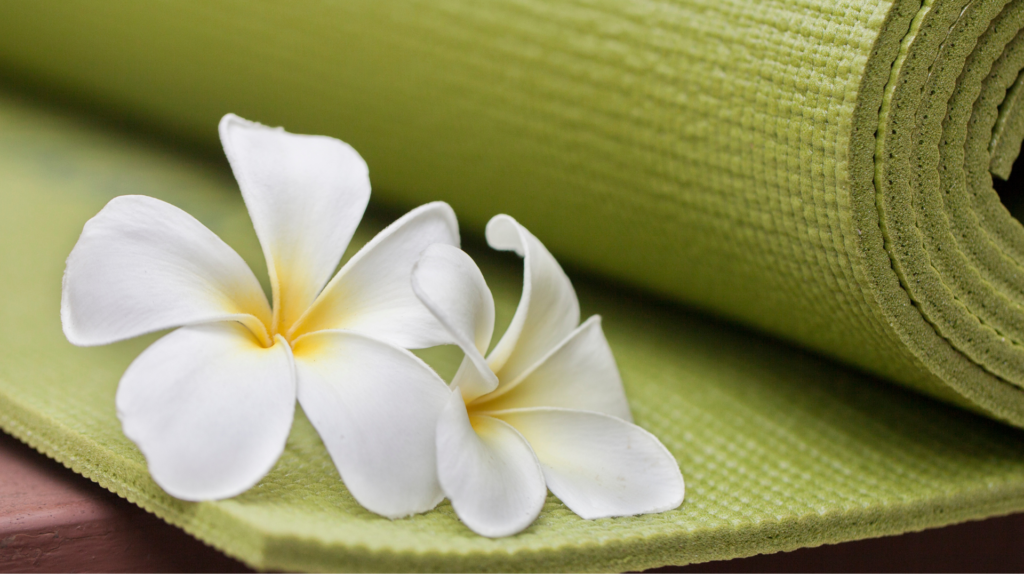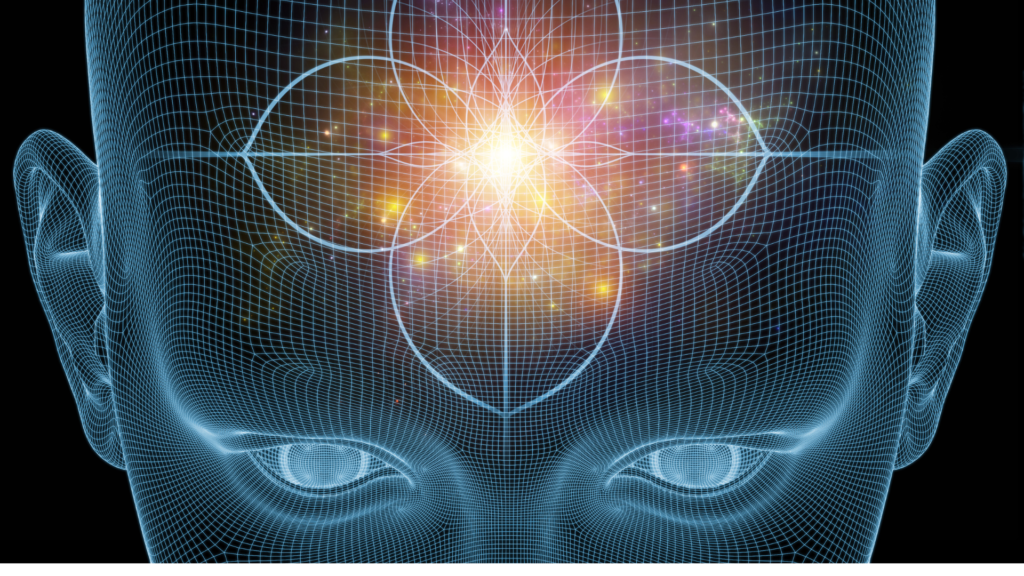Hatha Yoga Pradeepika – Chapter 1 – Asana (Sanskrit = Light on Hatha Yoga)
Background – Hatha Yoga Pradeepika – Chapter 1 – Hatha Yoga Pradeepika is a seminal work on Hatha Yoga by Swami Svatmarama, a disciple of Swami Korakhnath around the 15th and 16th Century. In fact, this work is a progresssion from similar works by other sages. However, this text is considered significant because it attempts to classify Hatha Yoga into easily decipherable sections. Furthermore, it covers asanas, pranayama, bandhas, kriyas, nadis, mudras, chakras, kundalini etc.
Hatha Yoga Pradeepika – Chapter 1 – Asana
(1-9) Salutations to Adinath (Siva) who developed the knowledge of Hatha Yoga, which is the base for attainment of Raja Yoga. Also, salutations to Guru Srinatha by Yogi Swatmarama. In this, Yogi Swatmarama offers a light on Hatha Yoga to those who are struggling with conflicting doctrines. Also, he pays obeisance to Matsendra, Goraksha and others who knew Hatha Vidya and taught it to Yogi Swatmarama. Finally, in the galaxy of Hatha Yogis and Sidhas, there are – Adinatha, Matsyendra, Natha, Sabar, Anand, Bhairava, Chaurangi, Meenanatha, and many others.
(10-14) Hatha Yoga protects the yoga practitioner from pain like a house and supports his efforts like a tortoise. In fact, the yoga practitioner should keep the knowledge secret.
He should practice in a small room, situated in an isolated place, free from stones, fire and water or disturbances of any kind and governed in a Dharmic manner (meaning all citizens conformed to the rule of law).
Also, the room should be have a small door, level, be free from holes and hollows, be neither too high or low, be well plastered with cow dung and be free from dirt, filth and insects. Outside, there should be a shaded area with raised seat with a well, enclosed in a compound.
Finally, the person should rid himself of anxiety and then begin the practice of Hatha Yoga as instructed by his guru.
Hatha Yoga Pradeepika – Chapter 1 – Some rules
(15) 6 virtues impede development in Hatha Yoga – they are over-eating, excessive exertion, excessive talking, excessive adherence to rules, company of humans and unsteadiness.
(16) 6 habits bring success – zeal, boldness of drive and willingness to start, patience, perseverance, ability to discriminate, clarity of purpose and aloofness.
(17) The 10 rules of Yama are – Ahimsa (non-violence), Satya (Truth), Asteya (non-stealing), Brahmacharyam (sexual continence), Kshama (forgiveness), Drithi (self-control), Daya (compassion), Arjavam (frankness or being straightforward), Mitahara (controlled diet), Shoucham (cleanliness).
The 10 rules of Niyama are – Tapas (austerity), Santosham (contentment), Aasthikyam (belief in the Vedas), Danam (charity), Eeshwara Poojanam (prayer to God), Siddhanta Vakyam (listening to spiritual teachings), Hrimathi (modesty), Japo (Japa), Hutam (Yagna) has been stated by Yoga shastra experts.
Hatha Yoga Pradeepika – Chapter 1 – Asanas – part 1
(18) Asanas are the first part of Hatha Yoga, hence described first. Notably, it should be practiced for gaining steady posture, health and lightness of body.
(19) Svastikasana – Having kept the soles of the feet exactly between the knee and thigh, maintaining an erect and balanced posture, when one sits calmly it is called Swastika.
(20) Gomukhasana – Placing the right ankle next to the left buttock and the left ankle next to the right buttock, this is Gomukhasana, having the appearance of the cow.
(21) Virasana – One foot is firmly placed on the other thigh and the thigh on the other foot. This is Virasana.
(22) Kurmasana – Press the anus down on the ankles with feet facing outward, this is called kurmasana by yogis.
(23) Kukkutasana – Sit in Padmasana, place the hands, inserting the hands between the thigh and knees, place them firmly on the ground and rise in the air.
(24) Uttana kurmasana – Go into Kukkutasana. Lying on the back, wind the hands behind the neck like a tortoise. This is Uttana Kurmasana (tortoise on its back pose).
Hatha Yoga Pradeepika – Chapter 1 – Asanas – part 2
(25) Dhanurasana – that which is called dhanurasana is performed by catching the toes of the feet and bringing it to the ear.
(26) Matsyendrasana – First, place the right foot at the base of the left thigh and the left foot outside the folded right knee. Next, catch the left foot with the right hand and turning around, catch the left foot with the right hand around the back. This is called matsendrasana
(27) This matsendrasana fans gastric fire and is a weapon which destroys all terrible diseases of the body. In fact, with daily practice it arouses the kundalini and stops wastage of the moon in men.
(28) Paschimatanasana – stretching both legs on the ground like a stick, catch the toes with the hands, place the forehead on the knees and rest.
(29) This paschimotanasana moves the vital wind to the rear channel. It kindles the gastric fires, makes the loins ean and cures all disease in men.
(30) Mayurasana – Placing both hands on the ground, rest the navel on the elbows and balancing thus, raise the body in the air like a rod. This position is called Mayura.
(31) Mayura cures all diseases like Gulma (enlargement of glands in the abdomen like spleen), Udara (stomach), removes irregularities arising from the imbalance of phlem, bile and wind. Also, it enables digestion of food taken in excess and restores appetite, even having the ability to digest poison.
(32) Shavasana – Lying stretched on the ground like a corpse is Shavasana. In fact, it removes fatigue and induces homeostasis.
Hatha Yoga Pradeepika – Chapter 1 – 4 essential asanas of Siva
(33) Siva taught 84 asanas. Of these 4 essential ones are explained.
(34) These four are Siddam, Padmam, Simham, Bhadram. Of these, Siddhasana is most comfortable and should be practiced more frequently.
(35) Siddhasana – First, place one heel firmly at the perineum and the other over the male organ. Next, rest the chin on the chest and restrain the sense organs. Finally, gaze steadily at the space between the eyebrows. This is Siddhasana, and opens the door to emancipation.
(36) An alternate pose is performed by placing the left ankle above the male organ with the left ankle above it.
(37) Some call this Siddhasana. Also, it may be called Vajrasana, Muktasana or Guptasana.
(38) Among the Yamas, controlled diet is most important, harmlessness as most important of the Niyamas, siddhas proclaim Siddhasanam as the most important of asanas.
(39) Of all the 84 asanas, one should practice Siddhasana constantl. It purifies the 72,000 nadis.
(40) By constantly contemplating on the self, maintaining a controlled diet and practicing Siddhasana for 12 years, a Yogi obtains success.
(41) Once Siddhasana has been mastered, other postures have no value. In fact, the practitioner becomes aware of ones prana through use of Kevala Kumbaka and the Unmani-avastha (gem-state) which delights arises without effort.
(42) Expertise in Siddhasana automatically results in control over the 3 bandhas (Moola, Jaaladhara bandha).
(43) There is no asana like the Siddha, no kumbhaka like kevala, no mudra like the kechari and no laya like the nada (sound in the inner ear).
Hatha Yoga Pradeepika – Chapter 1 – Padmasana

(44) Padmasana – First, place the right foot on the left thigh and the left foot on the right thigh. Next, cross the hands behind the back and grab the right toe with the right hand and the left toe with the left hand. Finally, rest the chin on the chest and gaze at the tip of the nose. This is called Padmasansa, the destroyer of disease.
(45, 46) Another opinion – First, place one foot on the opposite thigh with soles facing up. Similarly, place the foot on the opposite thigh. Next, place the hands on the thighs with palms outwards. Finally, direct the gaze to the tip of the nose, place the tongue at the root of the front teeth, and placing the chin on the chest, slowly raise the prana (by performing the moola bandha)
(47) This is called Padmasana and cannot be perfected by all, only the intelligent can accomplish it.
(48) Assuming Padmasana, with palms over one another, fix the chin on the chest, contemplating on THAT, draw up the apana vayu while pushing down the air after inhaling it.
(49) The Yogi, who is steady in Padmasana and fills his nadis with breath attains mukti. In fact, there is no doubt about this.
Hatha Yoga Pradeepika – Chapter 1 – Other asanas
(50) Simhasana – Place the ankles on either side of the perineum, the right ankle on the left side and the left ankle on the right side.
(51) Place the hands on the knees with stretched fingers, keeping mouth open, focus the attention at the tip of the nose.
(52) This is Simhasana, held sacred by the best of Yogis. Indeed, this asana facilitates the 3 bandhas.
(53) Bhadrasana – Place the ankles below the scrotam, soles joining each other with heels touching the perineum.
(54) Hold the feet firmly with the hands and remain motionless. This is Bhadrasana, the destroyer of all disease. The Yogis who have become siddhas call this Goraksasana.
Hatha Yoga Pradeepika – Chapter 1 – Lifestyle rules
(55) The Yogis become free of fatigue by practice of asana and bandhas, should practice purification of Nadis, Mudras and control of breath.
(56) Asanas, the variations of kumbaka, practice of various mudra’s, focus on the nada comprise the sequence of Hatha Yoga.
(57) The Brahmachari, who following a controlled diet, unattached to the fruits of his effort in Yoga, practices Yoga sincerely will gain success in a year.
(58) Moderate diet is well cooked, pleasant food which fills ¾ of the stomach and is eaten as an offering to Siva.
(59) Bitter, sour, saltish, pungent, food which heats the body, green vegetables, fermented gruel, sesame and mustard oil, intoxicating liquor, fish, meat, curds, buttermilk, horse-gram (chana-daal), plums, oil cakes, asafoetida and garlic should not be consumed.
(60) Reheated food, which is devoid of taste, has excess of salt or sourness, that which is spoiled or has too many vegetables.
(61) Goraksha says, fire, sex and long journeys should be avoided. Also, avoid bathing early in the morning, fasting and excessive physical activity.
(62) Wheat, rice, barley, Shastika (a type of rice), corn, milk, ghee, brown sugar, butter, sugar-candy, honey, dried ginger, parwal (a vegetable), the five herbs (Jivanti, vastumulya, aksi, meghanada and punarnava), moong and pure water.
(63) A yogi should eat nourishing and sweet food made with ghee, milk and butter. In fact, it should increase the dhatus (humours) in the body, be pleasing and suitable.
(64) Whether young, old, very old, sick or weak, anyone who is not lethargic gets success if he practices yoga.
(65) One can get Siddhi only through intense practice. Importantly, it is not possible to get success by merely reading the sashtras.
(66) Siddhi cannot be achieved by wearing a dress or talking about it. Only practice will result in success. Without doubt, this is the truth.
(67) The asanas, kumbhas, karanas are the excellent aspects of Hatha Yoga which should be practiced till the fruit of Raja Yoga is reached.



Thank you very much for this clear presentation
Thank you for your support